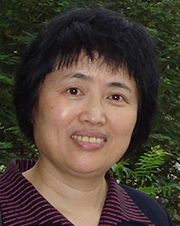From multi-component imaging to ocean bottom seismic technology - challenges or opportunities?
OR
SEG members, view the course for free!
Format: Virtual Webinar. 45 min. presentation followed by 15 min. Q&A
Please note that two sessions will be given at different dates listed below.
Session 1, Wednesday, Feb 17, 2021, 10 am to 11 am Singapore Time
Session 2, Thursday, April 8, 2021, 11 am to 12 pm Sydney Time
Multi-component imaging technology has experienced up and down cycles in the past decades. Even though people were excited by the capability of PS wave imaging through gas cloud structures 20 years ago, oil companies are still hesitant to put the technology into practice over many years due to complicated imaging technology, long processing cycles, and economic consideration.
However, in recent years, as ocean bottom seismic (OBS) acquisition and imaging technology have been incessantly developing, multi-component imaging technology has attracted more and more attention, and made its way from pre- mature to gradually maturing. Successful case studies, such as converted wave imaging under gas clouds, fracture detection using shear wave splitting, and joint PP-PS inversion to identify potential reservoirs, have been demonstrated worldwide, especially in the Asia Pacific region where gas clouds are always a troublesome problem in P-wave imaging.
Because of complex processing workflows, multi-parameters, and uncertainties involved in velocity model building and imaging, there are serious challenges in multi-component processing, particularly in converted wave imaging. In this lecture, I will provide an overview of a variety of challenges, key processing steps, and recent advances in converted-wave imaging, which not only have significantly improved the quality of converted wave images but also greatly reduced processing turnaround times. New developments including how to use multi-modal surface wave inversion to derive high resolution shallow S-wave velocity models, which remarkably resembled the near seafloor geologies and provided a solution for shear statics and shallow Vs depth model building; PS wave OBS data velocity analysis in shallow and deep water environments; fracture detection using combined shear wave splitting analysis and depth imaging; wavefield leakage and multiple reductions incorporating with PP and PS data; joint PP-PS tomography to build depth velocity model; and joint PP-PS inversion for reservoir characterization will be explored and illustrated with both land and OBN/OBC survey examples. These examples cover from Cuu Long Basin, Offshore Vietnam, Malaysia Basins, Indonesia’s LNG, and gas fields to Zunger Basin, NW China, etc. They have demonstrated that the converted wave imaging can certainly provide valuable information to enhance the successes in the discovery of potential hydrocarbon prospects. What we gain from multi-component technology is not only like seeing the images from black-white pictures to colored pictures, as people often described, but also are the insights into some structures which were unseen before in P-wave images because of different lithological responses of P- waves and Shear movements.

Your Instructor

Xiaogui Miao, Ph.D Quested after multi-component imaging and processing technologies for more than 20 years, Dr. Xiaogui Miao has the expertise and possessed extensive experience in land 3D3C and Ocean Bottom Sensor (OBC & OBN) 3D4C imaging from North America to Asia Pacific (APAC) region. After graduation from the University of Manitoba, Canada with a PhD in geophysics, Dr. Xiaogui Miao joined Veritas Geophysical Services Ltd. in Calgary, Canada in 1994, then became a geophysical research scientist there. In 2008, after Veritas and CGG merged, she was assigned as research and processing center manager at CGG’s newly -opened Beijing Center, then moved to Singapore in 2015, the APAC Hub of CGG, where she has since been in charge of multi- component and seabed imaging research.
Dr. Xiaogui has developed a variety of multi-component processing and imaging technologies and published many articles. Her recent research work has involved the development of surface wave and guided wave inversions for shear wave statics correction and shallow Vs and Vp model building, PS wave OBS data velocity analysis from rough seafloors, and incorporating of PP and PS data for wavefield leakage reduction, etc. She also has played as a crucial role in providing technical advisories and supervisions to overcome serious challenges in different types of multi-component processing and imaging projects in the APAC region from land to OBC/OBN and from shallow water to deep water. Her areas of study have covered from Cuu Long Basin, Offshore Vietnam, Malaysia Basins, Indonesia’s LNG and gas fields, to Bohai Bay, Offshore South China Sea, and Xinjiang of Northwest China, etc. To demonstrate the values of multi-component technology, she has pushed converted wave imaging into joint PP-PS inversion for reservoir characterization so to enhance the opportunities of hydrocarbon discovery as well.
Dr. Xiaogui Miao’s early research activities include converted wave prestack time and depth migrations in TTI/VTI media, surface consistent PP/PS wave imaging from rough topography, azimuthal anisotropic PP/PS wave velocity analysis and shear-wave splitting analysis, mirror imaging and multi-component VSP. She has also pioneered the converted wave true amplitude weight for converted wave pre-stack time and depth migrations, which ensures to produce reliable amplitude information for converted wave imaging and subsequent PP/PS reservoir characterization. Her early research also involved developing P-wave prestack anisotropic time and depth migrations for land data with rough topography and crooked survey geometry, as well as non-orthogonal, 1D and 2D orthogonal, bi-orthogonal Wavelet Transform algorithms for random and coherent noise attenuation and seismic attribution analysis, high-resolution matching pursuit spectral decomposition for 4D processing, etc.
